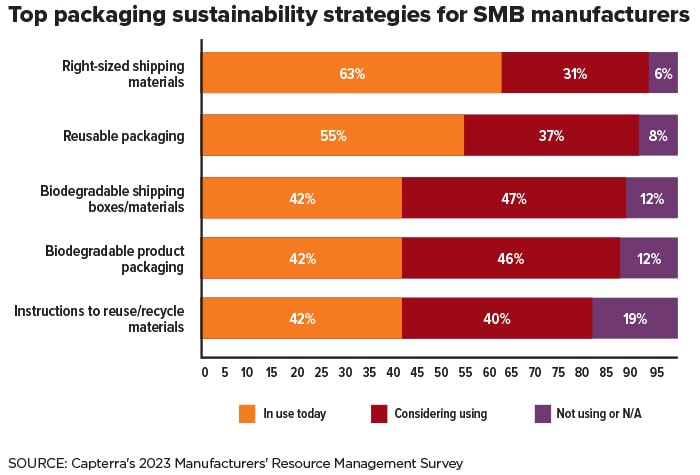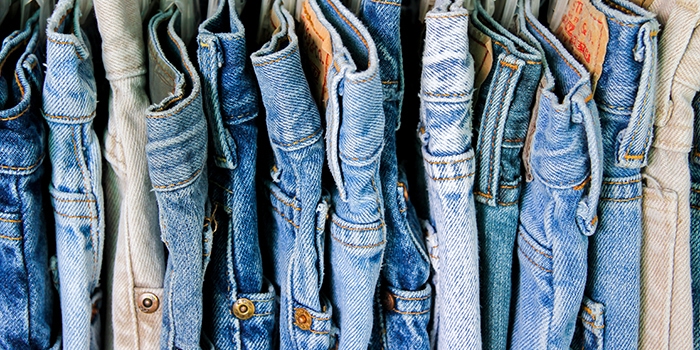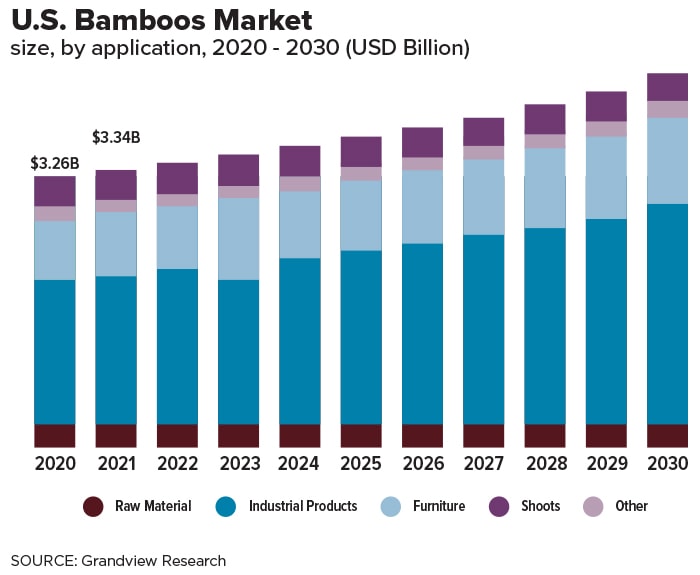VERTICAL FOCUS: Renewable/Sustainable Materials

Raw material shortages are becoming a dire challenge for supply chains due to overconsumption and increasingly extreme weather. Here’s how prioritizing sustainability will make a difference. Also revealed: top 10 renewable materials.
Straight from the Source
Manufacturers can source renewable products in a number of ways. Here are a few ideas to get started:
- Work with suppliers who are committed to sustainability. Many suppliers now offer renewable products, and some even specialize in them. Look for suppliers who have a good reputation for sustainability and who can provide documentation to support their claims.
- Consider the product’s full life cycle. When choosing a renewable product, consider the full life cycle of the product—from the extraction of the raw materials to the disposal of the product at the end of its life. This includes factors such as the energy used to produce and transport the product, the water used in the production process, and the waste generated.
- Look for products that are certified by third-party organizations. A number of third-party organizations certify renewable products using specific standards that products must meet. Look for products that are certified by organizations such as the Forest Stewardship Council, the Sustainable Agriculture Network, and the Rainforest Alliance.
- Be transparent with your customers. Let your customers know that you are using renewable materials in your products. This can help build trust and differentiate your products from your competitors.
Can Sustainability Save the Day?
Raw material shortages are becoming a dire challenge for supply chains due to overconsumption and increasingly extreme weather—especially as the planet recently experienced the warmest months on record. Capterra’s latest survey of small and mid-size (SMB) manufacturers reveals the impact of resource scarcity and how these businesses are leveling up sustainability strategies in response.
- Most manufacturers fear raw material shortages in 2024: 80% of survey respondents are moderately to severely concerned about the availability of raw materials needed over the next year. Plastics, fossil fuels, and plant-based shortages are among their top concerns.
- Manufacturers concerned about water embrace more sustainability strategies: 71% of SMB manufacturers are moderately to severely concerned about the long-term availability of water for their operations. Those with high concerns over future water availability are about twice as likely to set additional sustainability goals compared to the businesses with mild to no concerns.
- Sustainable packaging is a popular practice for reducing environmental impact, costs, and risk of material shortages (see chart): 63% of SMB manufacturers currently use right-size shipping materials and 55% currently use recyclable packaging.
As businesses navigate the challenges of increasingly disruptive environmental realities, those that prioritize sustainability will find themselves better positioned to thrive, according to the survey.

Recycling Facts and Figures
- About 80% of what Americans throw away is recyclable, yet the recycling rate is only 28%.
- Recycling 1 ton (about 2,000 pounds) of paper saves 17 trees, two barrels of oil (enough to run the average car for 1,260 miles), 4,100 kilowatts of energy (enough power for the average home for 6 months), 3.2 cubic yards of landfill space, and 60 pounds of pollution.
- Americans use 2.5 million plastic bottles every hour; most of them are thrown away. It takes about 500 years for the average-sized plastic water bottle to decompose and about 1,000 years for plastic grocery sacks to degrade.
- Recycling plastic saves twice as much energy as burning it in an incinerator.
- The energy saved from recycling one glass bottle can run a 100-watt light bulb for 4 hours or a compact fluorescent bulb for 20 hours. It also causes 20% less air pollution and 50% less water pollution than when a new bottle is made from raw materials.
- Mining and transporting raw materials for glass produces about 385 pounds of waste for every ton of glass that is made. If recycled glass is substituted for half of the raw materials, the waste is cut by more than 80%.
- About 11 million tons of textiles end up in U.S. landfills each year—an average of about 70 pounds per person.
SOURCES: Environmental Protection Agency, DoSomething.org, Missouri Recycling Association, Earth 911.
Top 10 Renewable Materials
The following materials are considered renewable because they can be replenished at a rate that is equal to or greater than their rate of consumption. They are also sustainable because they can be produced and used in a way that minimizes environmental impact.
1. Wood
2. Bamboo
3. Cotton
4. Hemp
5. Wool
6. Cork
7. Recycled paper
8. Recycled plastic
9. Reclaimed metals
10. Mycelium
It’s all in the Jeans
One bale of cotton—approximately 480 pounds of cleaned cotton lint—can make more than 200 pairs of jeans or 1,200 t-shirts.

Getting Bamboozled
Bamboo is widely used as a replacement for conventional materials, including wood for furniture, hardwood for flooring and decking, and plastic in everyday items, such as toothbrushes and medicinal products. Bamboo fiber is also used to replace cotton and synthetic fabrics.
The cost to cultivate bamboo is low, and the time required for bamboo to grow to its full potential is also shorter than other hardwoods.
The global bamboo market size was estimated at $59.3 billion in 2021 and is expected to expand at a compound annual growth rate of 4.5% from 2022 to 2030, according to Grandview Research.
Growing investments in infrastructure development and rising consumer awareness about sustainable, durable, and eco-friendly products will drive the growth of the global bamboo industry.

